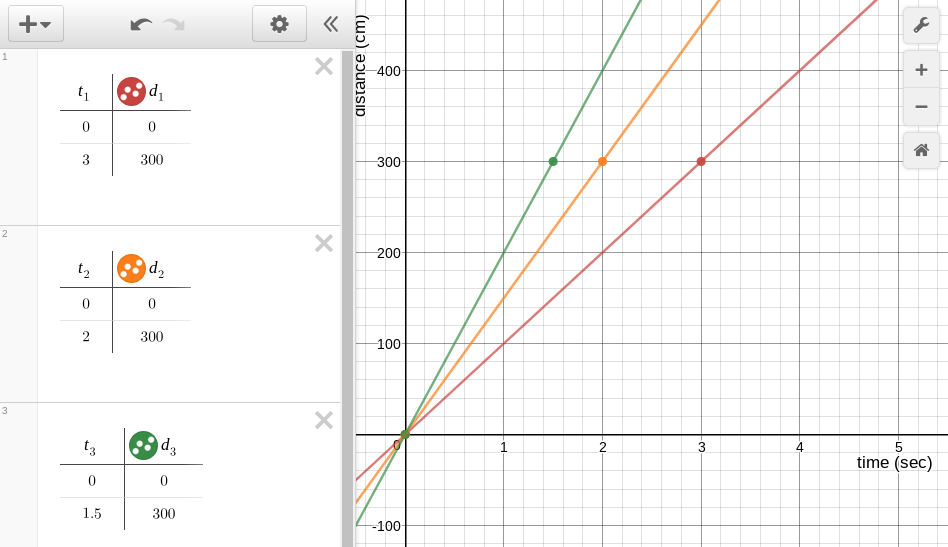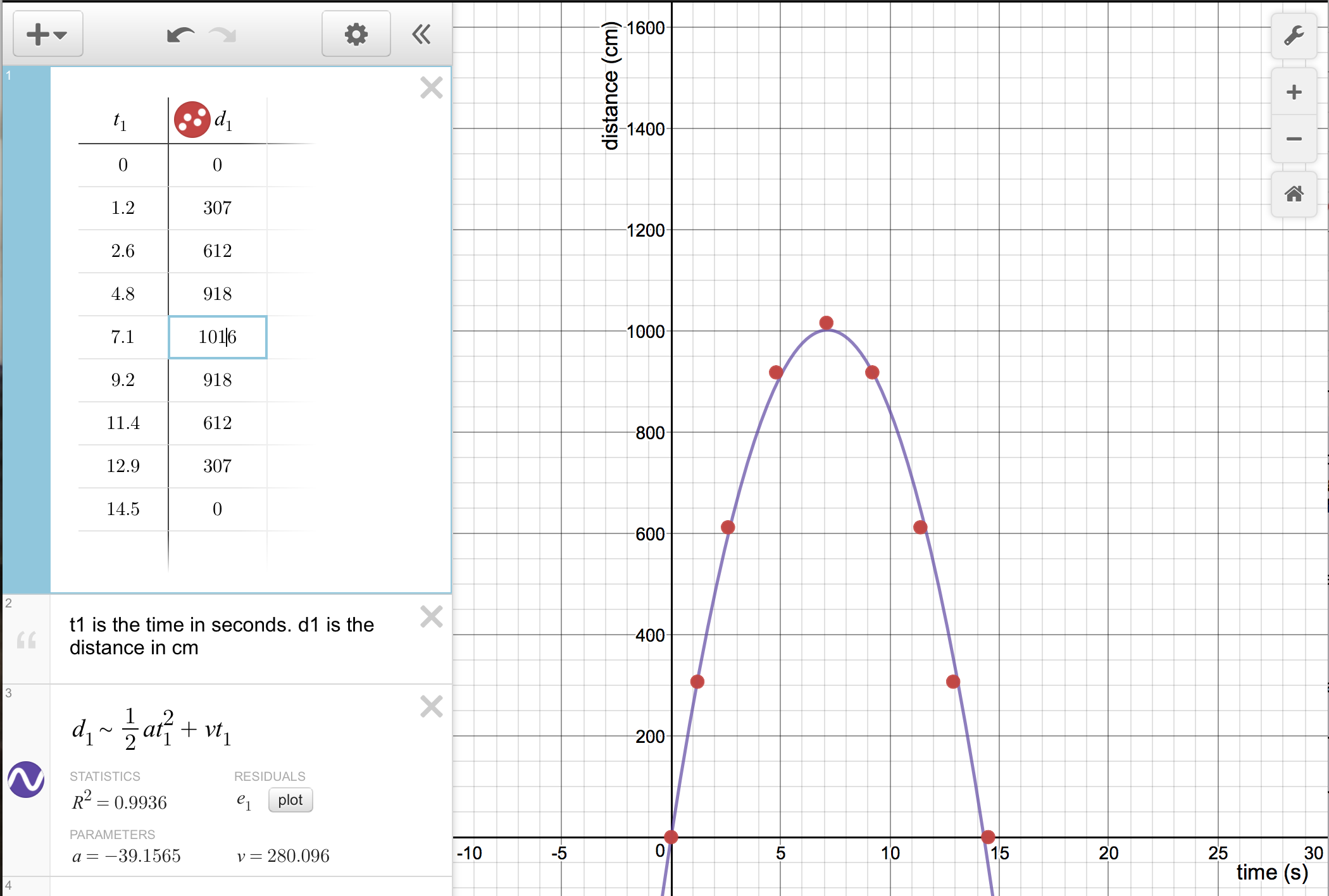- Plot the soap data on the graph.
- __________ __________ Calculate the density of the soap. Include the units with your answer.
- ______________ Based on the slope, will this soap [float] OR [sink]?
- ______________ Based on the slope, is this soap likely to be [Ivory] OR [Dial] soap?
- __________ __________ Calculate the mass for this soap for a volume of 200 cm³.
- __________ __________ Calculate the volume for this soap for a mass of 240 g.
- Newton's first law of motion.
- Newton's second law of motion.
- Newton's third law of motion.
What law of physics is being demonstrated by the marbles on the marble ramp?

- __________ __________ Calculate the velocity (speed) for the first table (the lowest line).
- __________ __________ Calculate the velocity (speed) for the second table (the middle line).
- __________ __________ Calculate the velocity (speed) for the third table (the top line).
- __________ Which RipStik run is the fastest: top, middle, or bottom line?
- __________ Which RipStik run is the slowest: top, middle, or bottom line?
- __________ __________ How far will the RipStik travel based on the velocity from the first table 36 seconds?
- __________ __________ How long in seconds for the Ripstik to travel 5000 centimeters based on the data in the first table?

- acceleration: __________ __________
- initial velocity: __________ __________
- __________ __________ After six seconds, what is the distance of the RipStik?
- __________ __________ After thirty seconds, what is the distance of the RipStik?
- __________ __________ Calculate the Gravitational Potential Energy of the marble before the marble is released using the formula GPE = mgh.
- __________ __________ The kinetic energy at the bottom of the ramp should be equal to the GPE the marble had at the top of the ramp. Solving Kinetic Energy KE = ½mѵ² for ѵ, calculate the velocity that the marble should have at the bottom of the ramp.
- __________ In the laboratory using an actual marble and the orange track, will the marble have the speed you just calculated?
- __________ Will the actual marble speed be faster OR slower than you have calculated?
- _________℃ What is the temperature of a mix of melting ice and water?
- _________℃ What is the temperature at which solidified coconut oil melts?
- _________℃ What is the typical indoor temperature in Pohnpei?
- _________℃ What is the temperature of the healthy living human body?
- _________℃ What is the temperature of boiling water?
- _________ _____ Lee Ling was at E 158° 09.314'. Calculate the difference in arcminutes between the south faculty office and Lee Ling.
- _________ _____Use the difference in arc minutes from part a) and the experimental value of 1850 meters per arcminute of longitude here on Pohnpei to calculate the distance in meters you had to walk to the East to get to Lee Ling's location.